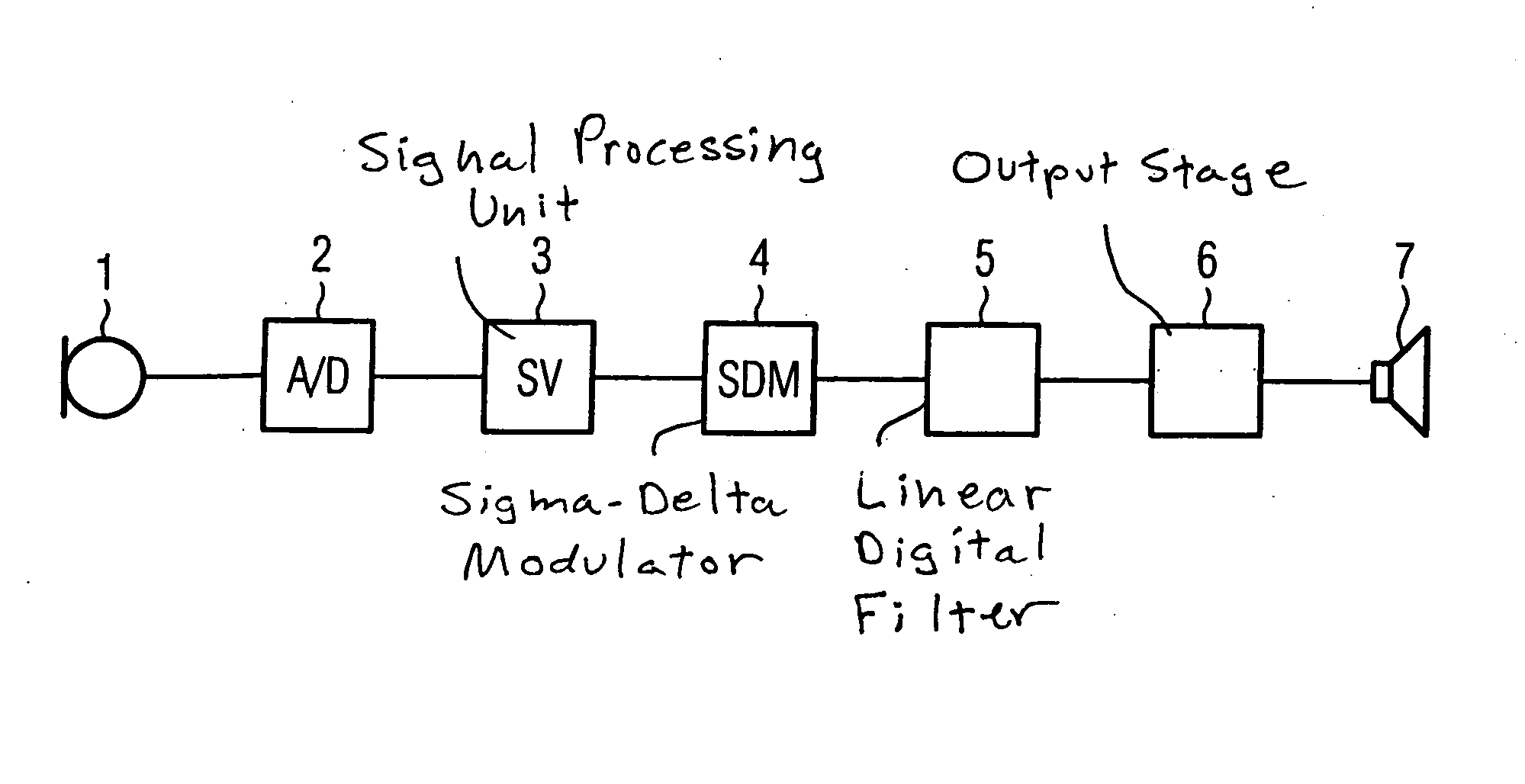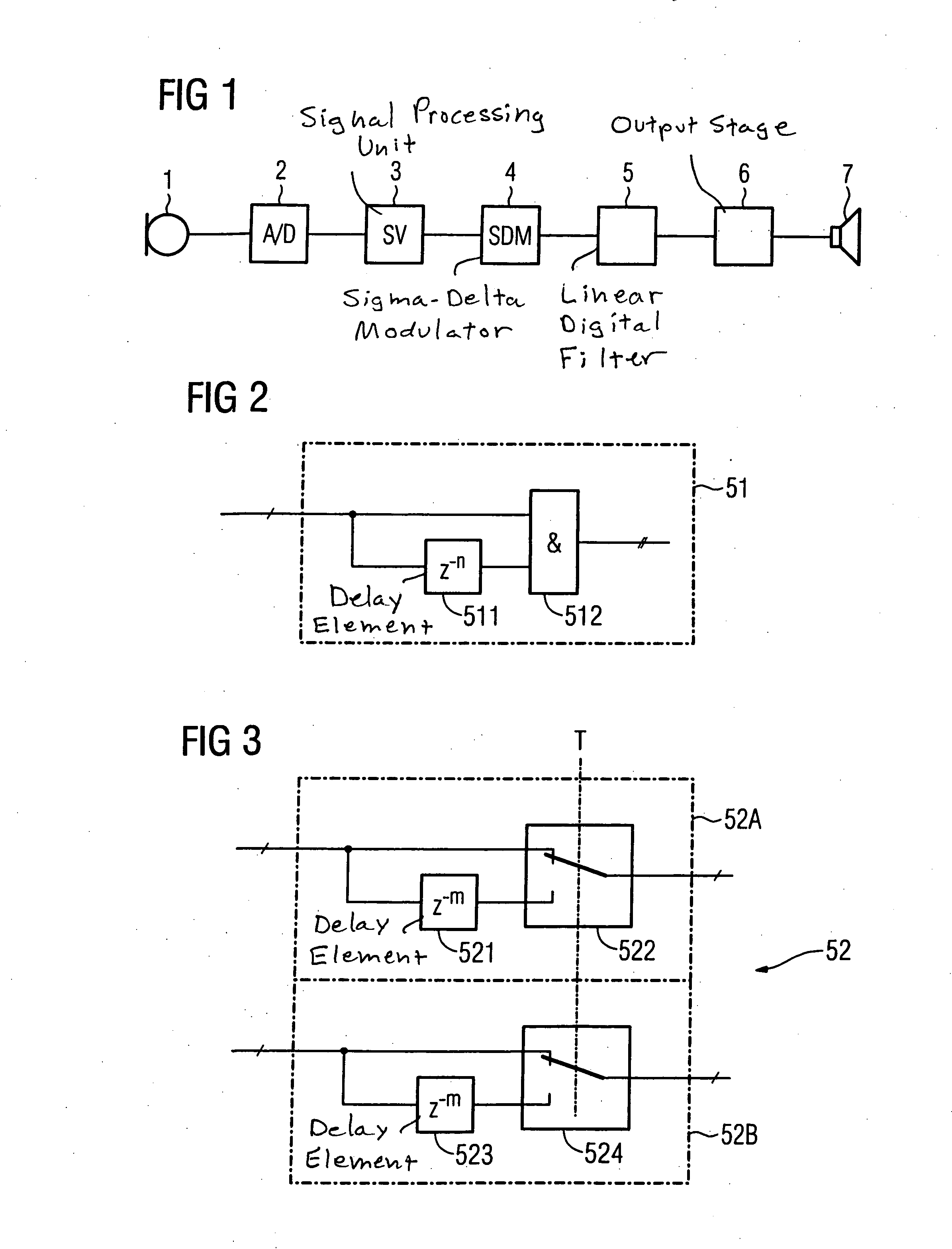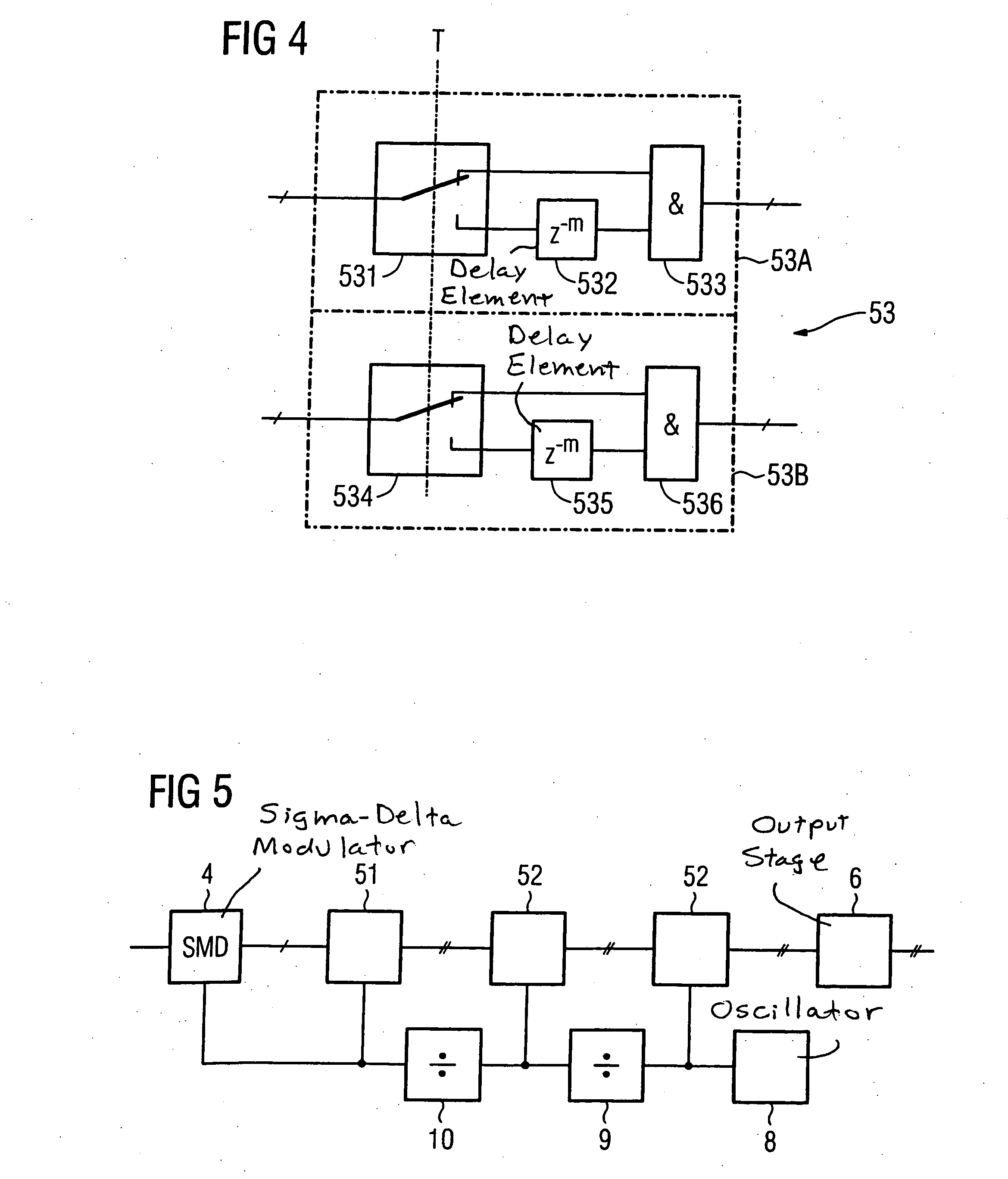Hearing aid device with an output amplifier having a sigma-delta modulator
- Summary
- Abstract
- Description
- Claims
- Application Information
AI Technical Summary
Benefits of technology
Problems solved by technology
Method used
Image
Examples
Embodiment Construction
[0018]FIG. 1 shows the signal path of a hearing aid device between an input transducer and an output transducer. An input signal is acquired by the input transducer and converted into an electrical signal. At least one microphone 1 that acquires an acoustic input signal typically serves as the input transducer. Modern hearing aid devices frequently have a microphone system with a number of microphones in order to achieve a reception dependent on the incident direction of acoustic signals (a directional characteristic). The input transducer alternatively can be fashioned as a telephone coil or an antenna for acquisition of electromagnetic input signals. In a digital hearing aid device, the input signals converted into electrical input signals by the input transducer (the microphone 1 in the exemplary embodiment) are initially converted into a digital signal by an A / D converter 2, and this digital signal is supplied to a signal processing unit 3 for further processing and amplificatio...
PUM
 Login to View More
Login to View More Abstract
Description
Claims
Application Information
 Login to View More
Login to View More - R&D
- Intellectual Property
- Life Sciences
- Materials
- Tech Scout
- Unparalleled Data Quality
- Higher Quality Content
- 60% Fewer Hallucinations
Browse by: Latest US Patents, China's latest patents, Technical Efficacy Thesaurus, Application Domain, Technology Topic, Popular Technical Reports.
© 2025 PatSnap. All rights reserved.Legal|Privacy policy|Modern Slavery Act Transparency Statement|Sitemap|About US| Contact US: help@patsnap.com



